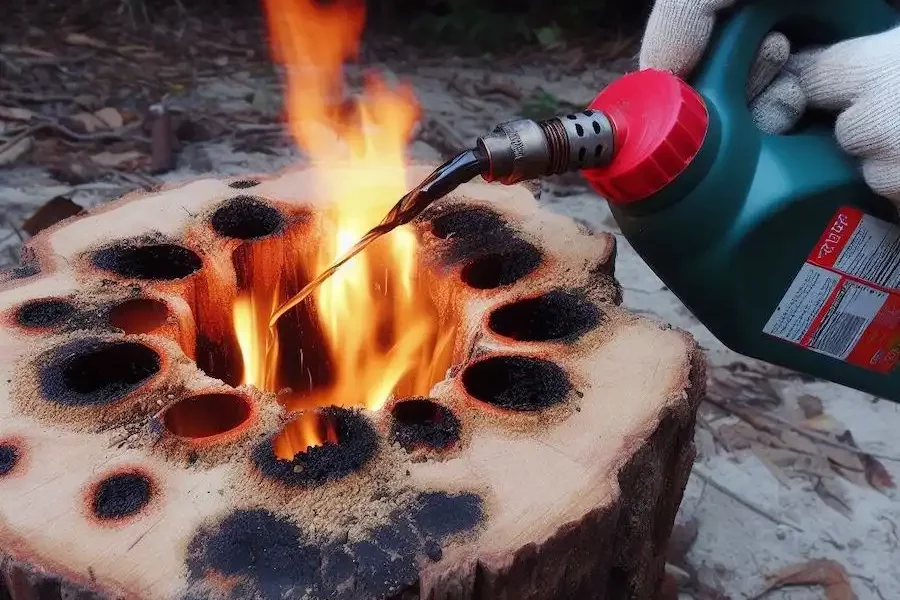Maintaining a beautiful landscape sometimes requires the removal of trees, including their stumps. Whether a tree has become dangerous, is in decline, or simply needs to be removed for other reasons, the stump often remains. It is essential to tackle the stumps and roots to prevent regrowth and facilitate reconversion of the area.
Here are four non-toxic approaches to removing a tree stump, promoting natural decomposition. These methods range from the most environmentally friendly to those that are more environmentally friendly.
#1 Cover the Stump
The easiest and most natural way to deal with a tree stump is to cover it. This approach is non-invasive and helps speed up the natural decomposition process.

To use this technique, cover the stump securely with a waterproof, opaque tarp. This will deprive the stump of light and moisture, thereby accelerating its deterioration. Although this method is slow – it takes six to eighteen months – it is environmentally safe and requires minimal effort.
#2 Epsom Salt Method
Another approach to removing a tree stump is to use Epsom salt, which dehydrates the plant through a process called desiccation.
This method is safe for the environment and the soil. The steps include:
Drill holes into the stump using a 1/2-inch drill bit.
Fill the holes with Epsom salt and compress.
Wet the stump without removing the salt to help it penetrate the wood.
Cover the stump with a light-resistant, waterproof tarp.

This method usually takes a few months for the stump to become brittle and decompose.
#3 Controlled burning
Controlled burning should be carried out with caution, preferably in less populated areas, after confirming that it is legal with local authorities.
For a controlled burn:
Continued on next page

